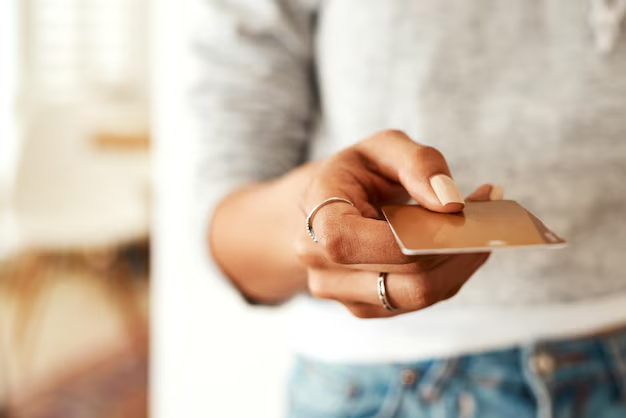Seamless Contact Transfer: How To Transfer Contacts From Android To Android
Switching smartphones can be both exciting and daunting. While the allure of a new device's features and capabilities draws us in, the practical aspects—like transferring contacts—often pose a challenge. But fear not! Transferring contacts from one Android device to another is easier than you might think. Let's delve into the tried-and-true methods to get your contacts onto your new phone seamlessly.
Why Transferring Contacts Is Essential
Contacts are the backbone of your communication network. Losing this data can be more than inconvenient—it can disrupt your personal and professional life. Ensuring that these contacts are accurately transferred to your new device means less stress and more time to enjoy your new gadget.
Using Google Account Sync
🔄 The Simplest Method
Google makes transferring contacts straightforward via its sync feature. By linking your Google account to your Android device, you can seamlessly move contacts across different devices. Here's how:
On Your Old Android Device:
- Navigate to Settings.
- Tap on Accounts.
- Select your Google account.
- Ensure that Contact Sync is enabled.
On Your New Android Device:
- Go to Settings.
- Tap on Accounts.
- Add your existing Google account if it hasn’t been added already.
- Allow it to sync contacts.
Benefits of Google Sync
- Automatic Updates: Every change you make is automatically updated across all devices.
- Backup Security: Google’s cloud ensures that data is safe and retrievable.
💡 Quick Tip: Always ensure you have a stable internet connection during the sync process to avoid partial transfers.
Utilizing Bluetooth to Transfer Contacts
📲 Old-School Yet Reliable
For those who prefer doing things hands-on or if you’re transitioning to a device without a Google account connected, Bluetooth comes in handy:
- Enable Bluetooth on both devices. Go to Settings > Bluetooth.
- Pair the Devices. On your old device, search for the new device and pair them by confirming the passcodes.
- On the old device, open the Contacts app.
- Tap on Settings or Menu (often represented as three dots).
- Select Send contacts and choose Bluetooth as the transfer method.
- Select your paired device, and the transfer will commence.
Pros and Cons of Bluetooth Transfer
- Pros: No internet required, accessible on virtually all Android devices.
- Cons: Can be slow for large contact lists; pairing issues could occur.
Sharing Contacts via VCF File
📄 The Versatile Contact Format
VCF (Virtual Contact File) is another reliable way to transfer contacts. Here’s how to create and share a VCF file:
Export Contacts to VCF:
- Open the Contacts app on your old device.
- Go to Settings > Export contacts.
- Save the file as a .vcf.
Transfer the VCF File:
- Share the file via email, Bluetooth, or a file-sharing app.
- On your new Android device, open the VCF file through a compatible app, usually your Contacts app.
Import Contacts:
- Open the Contacts app.
- Go to Settings > Import.
- Select the VCF file and import your contacts.
Key Advantages of VCF
- Flexibility: Transfer contacts via any file-sharing method.
- Compatibility: The VCF format is widely supported.
📌 Note: Ensure your new device’s Contacts app is compatible with VCF file import to avoid transfer issues.
Third-Party Apps for Contact Transfer
🌟 Feature-Rich Alternatives
Several apps can facilitate the transfer process with additional features like duplicity checks, restoration, and backup. Some noteworthy options include:
- Samsung Smart Switch: Perfect for transferring data between Samsung devices.
- Xender and SHAREit: Popular for transferring a variety of data types, not just contacts.
The App Approach
- Download the app from the Google Play Store on both devices.
- Follow the in-app instructions to transfer contacts.
Evaluating Third-Party Apps
- Advantages: Easy to use, often faster than other methods, can handle large data transfers.
- Disadvantages: Often require Wi-Fi or mobile data, potential security risks with personal data.
A Summary Guide to Contact Transfer Methods
Here’s a simplified roadmap to help you decide the best method:
| Method | Pros | Cons |
|---|---|---|
| Google Sync | Automatic updates, cloud backup | Internet required |
| Bluetooth | No internet, universally available | Slower, pairing required |
| VCF File | Flexible transfer options | Manual process |
| Third-Party Apps | Feature-rich, fast | Requires data, potential security risks |
Tips for a Successful Contact Transfer 🌟
- Double-check sync settings if using Google Accounts.
- Ensure Bluetooth compatibility—not all devices have updated Bluetooth versions.
- Backup your contacts before initiating any transfer.
- Check app reviews and permissions if using third-party apps to ensure data safety.
In conclusion, understanding the various ways to transfer contacts between Android devices helps you choose the method that suits your needs best. Whether you opt for Google’s seamless sync, the trusty Bluetooth, the flexibility of VCF files, or the efficiency of third-party apps, each provides its unique advantages. By following the guidance provided, rest assured, your data transition to the new phone will be as smooth as possible—and your connections will remain intact. Happy transferring!

Related Topics
- How Can I Transfer a Video From Iphone To Computer
- How Can I Transfer Apps From Iphone To Ipad
- How Can I Transfer Apps From One Iphone To Another
- How Can I Transfer Contacts From Iphone To Iphone
- How Can I Transfer Contacts From One Iphone To Another
- How Can I Transfer Data From Iphone To Android
- How Can I Transfer Data From Iphone To Iphone
- How Can I Transfer Data From Iphone To Samsung
- How Can I Transfer Files From Android To Pc
- How Can I Transfer From Iphone To Samsung